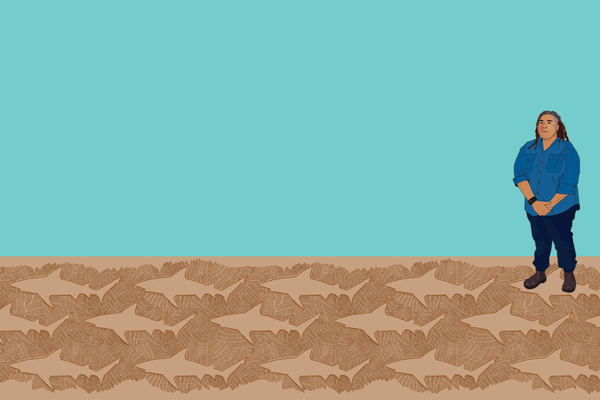A New South Wales first! New species of legless lizard discovered in the Hunter Valley
Found just two hours out of Sydney, a team of Australian Museum scientists have described the Hunter Valley Delma – the first legless lizard species endemic to NSW.
A team of scientists from the Australian Museum has just officially confirmed that a legless lizard from the Hunter Valley represents a new species to science, now named the Hunter Valley Delma (Delma vescolineata). Previously confused with a very similar-looking species with a much wider distribution further south, the new species is known only from the Hunter Valley and Liverpool Plains of New South Wales (NSW). With a relatively smaller range under increasing habitat modification, NSW’s only endemic legless lizard is a significant addition to the diverse and often threatened reptile fauna of Australia, and a priority for further research.
The Hunter Valley Delma (Delma vescolineata) was first found in 2012 by a local herpetological enthusiast Ryan Harvey and was initially considered a new population of the Striped Delma (Delma impar). However, this population looked somewhat different – it had barred lips and wasn’t as strongly striped, so the team at the Australian Museum began an investigation.

The newly described species Hunter Valley Delma (Delma vescolineata).
Image: Stephen Mahony© Stephen Mahony
To confirm whether the species was indeed distinct, the team had to compare genetic samples to those from the Striped Delma from southern NSW, the Australian Capital Territory, Victoria and South Australia. They also had to compare the physical features of the species to other similar legless lizards. In doing so they found that in addition to barred lips and weaker stripes there were also subtle differences in scales and head shape. The new species scientific name means “weakly striped”, a comparison to the Striped Delma found further south.

The Hunter Valley Delma has obviously patterned lips compared to the closely related Striped Delma.
Image: Stephen Mahony© Stephen Mahony
The Hunter Valley, where the lizard was discovered, is only two hours from the city of Sydney and even closer to Newcastle, so it is amazing how long this species went undetected. This is partially explained by its cryptic nature, living down burrows, in dense grass tussocks, and under rocks and fleeing rapidly when disturbed. It is also probable it was found earlier and assumed to be the Leaden Delma (Delma plebeia) which also occurs in the Hunter Valley. The Hunter Valley Delma is only found in the Hunter Valley and the nearby Liverpool Plains and like other related species it prefers open grassland habitats.

The Hunter Valley Delma is most closely related to the Striped Delma found further south. The Hunter Valley Delma is found together with the more widespread Leaden Delma in the Hunter Valley.
Image: Stephen Mahony© Stephen Mahony
The Hunter Valley Delma can be locally abundant in some environments and even seems to display a tolerance for disturbance, being found in very weedy, cleared, and grazed areas. However, the small area it is known to occur in and threats like loss of habitat to mining, development and cropping make it likely to be considered threatened with extinction. Further research into the ecology of the species will help make it clearer what threats impact the most and what actions may be necessary to assist it. Now that this species is scientifically known, this work can now start!
Stephen Mahony, Research Associate, Herpetology and Mammalogy, Australian Museum; and Research Assistant, University of Newcastle.
More information:
- Mahony, S. M., Cutajar, T., Rowley, J. J. L. (2022). A new species of Delma Gray 1831 (Squamata: Pygopodidae) from the Hunter Valley and Liverpool Plains of New South Wales. Zootaxa, DOI: 10.11646/ZOOTAXA.5162.5.5.








